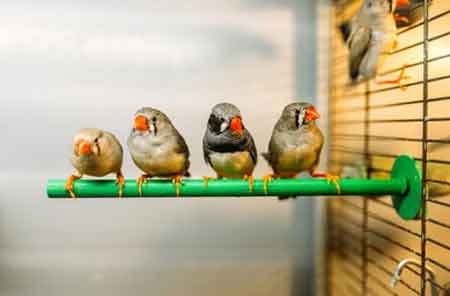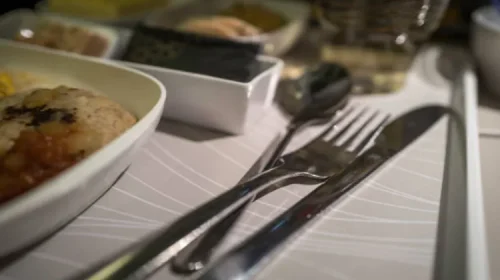You Can Take Care of Your Bird when He Breaks a Blood Feather
Blood feathers, also know as pin feathers, are new feathers that still have a blood supply to their shaft to support growth. When one becomes broken, the resulting bloody mess can panic bird owners. Blood feathers can be broken from flapping or banging against the inside of a cage, from a fall, or a wing trim gone bad. Dealing with the broken blood feather is really straightforward, and no cause for drama.
Identifying a Blood Feather

If you’ve never seen a blood feather on your pet bird, take some time to look at the lower portions on the shafts of the large primary flight feathers on your bird. All feathers start out as pin feathers when they first grow in, but the bigger flight feathers are just the easiest to see.
Most of the shafts will be white, and sort of see through, clear, with full feathering already in place. A blood feather, however, will have a thicker shaft that is dark purple. The color is from the blood filling the inside of that shaft to feed that growing feather. The blood feather won’t be fully grown in yet, and may only have a little bit of feathering at the tip that has come in so far. If you don’t see any feathers that fit this description, just keep checking back ever few days or so. One will show up eventually, click this over here now.
While a lot of bird owners worry about being able to tell if their bird has a blood feather before they trim wings, once you see one, you’ll know not to stress too much about it. They are very easy to identify. It’s worth the trouble to watch your bird for a while until you see one so you can feel confident about handing a blood feather problem.
Don’t Panic
For some reason, a broken blood feather has become a huge fear in the minds of may bird owners. The seriousness of the problem is often blown out of proportion. Many times when a bird breaks a pin feather, the blood simply clots. End of drama. If your bird has clotting or liver problems, then there may be more urgency for you to step in and help, but in most cases, you have the luxury of giving your bird a moment to calm down and see if the bleeding stops on its own.
When you need to help your bird
If you bird is continuing to traumatize the broken feather, banging it, or picking at it, or if it’s a large feather that isn’t clotting well on its own, then it’s time for you to step in and pull it.
The increased blood supply to these feathers make them much more sensitive than normal, so fiddling with it is not comfortable for your bird. Pulling it out is going to hurt. Going slowly and spending more time touching the feather than absolutely necessary will only further prolong your bird’s distress. When you’re ready to pull – be firm, be confident, be quick.
Holding a small bird feather firmly enough to yank it from the skin is difficult with your bare hands. Ideally, hemostats would be a great tool to use to clamp the feather and provide a good grip for pulling. In the likely event that you don’t have any hemostats, a clean pair of pliers can work.
Grip the shaft of the bleeding feather close to the base (near the skin, but without pinching any skin) and yank straight up and away from the bird with a firm quick pull. It’s best to have one person restraining the bird in a towel and another person concentrating on pulling the feather.
Once the feather is out, keep an eye on the skin where it came from. Make sure there is no part of the feather still attached, and check the skin for bleeding. A little pressure can be applied if needed, and if your bird will tolerate it. Let everyone, bird included, rest and calm down, allowing their blood pressure to return to normal.
If your bird did become stresses during the incident, it’s a good idea to check on him often to make sure he’s recovering. Normally, once the feather is out, all is well, and you’re done.
If you think your bird is having a more serious problem that a normal garden variety broken blood feather, or just don’t feel up to dealing with the situation yourself, you can refer to this article for how to find a local avian veterinarian.




